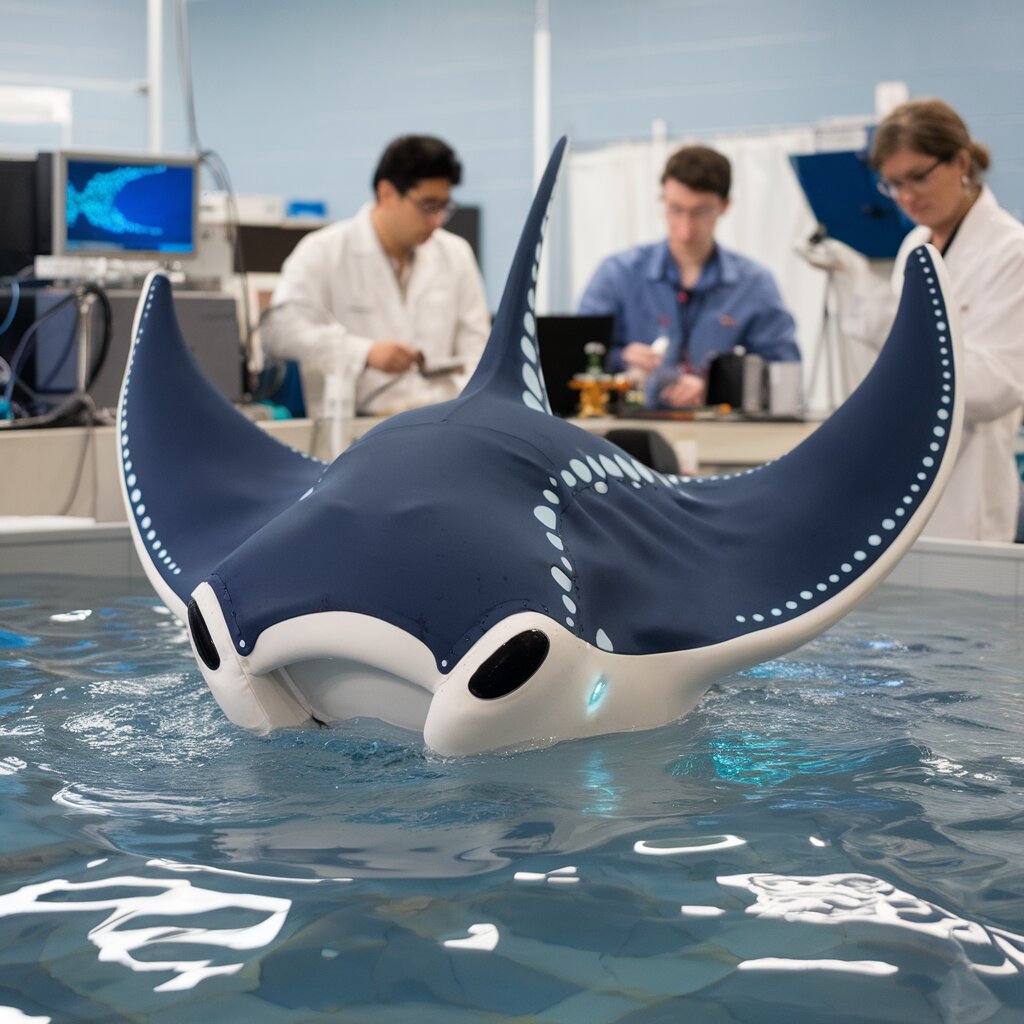In a significant leap forward for soft robotics, researchers at North Carolina State University have unveiled a groundbreaking swimming robot that draws inspiration from the graceful movements of manta rays. This innovation not only outpaces previous iterations but also showcases remarkable efficiency and adaptability, contributing to the expanding potential of robotic applications in marine environments.
Two years ago, NC State’s team of engineers made waves with a prototype soft robot capable of swimming at 3.74 body lengths per second. This earlier model set a high bar, but according to Jie Yin, the study’s corresponding author and an associate professor specializing in mechanical and aerospace engineering, their latest development eclipses these achievements. “We’ve enhanced the design, enabling the new robot to reach impressive speeds of 6.8 body lengths per second while also improving its energy efficiency,” Yin remarks, emphasizing the robot’s capabilities both at the surface and beneath the waves.
Integral to the robot’s prowess is its fin structure. Mimicking the wings of a manta ray, these fins are affixed to a silicone-based flexible body, allowing them to articulate freely yet maintaining stability when extended. The functional core of this design is an air chamber within the robot’s body. Inflation of this chamber causes the fins to curve downward, akin to a manta ray’s natural motion, while releasing the air triggers the fins to snap back, propelling the robot forward.
Haitao Qing, a leading author of the research paper and a doctoral candidate at NC State, explains the mechanism further: “By injecting compressed air into the chamber, we introduce energy into the system.” The dynamic of the fins naturally seeking a stable state means that releasing the air also liberates stored energy, necessitating only one actuator for rapid movement. This single-actuation system endows the robot with the ability to navigate both vertically and horizontally within the water.
The sophisticated design allows for impressive maneuverability; the robot was demonstrated navigating an intricate underwater obstacle course, as well as towing payloads across the surface. Utilizing a unique compressed-air power system, the robot adjusts its buoyancy dynamically: an empty air chamber at rest minimizes buoyancy, while the increased fullness during fin flaps boosts it, permitting seamless movement up and down the water column.
“This invention marries intricate engineering with elementary principles,” Yin notes. “Our robot’s single actuation input provides nuanced control in a complex vertical environment.”
Their noteworthy publication, titled “Spontaneous Snapping-Induced Jet Flows for Fast, Maneuverable Surface and Underwater Soft Flapping Swimmer,” presented in Science Advances, highlights substantial contributions from co-authors Yinding Chi and Yaoye Hong, along with colleagues Daniel Quinn and Haibo Dong from the University of Virginia.
This innovative approach to robotic design, drawing from the elegance of nature, signifies not only a technological advancement but also the effervescent possibilities in robotic ocean exploration and beyond.


